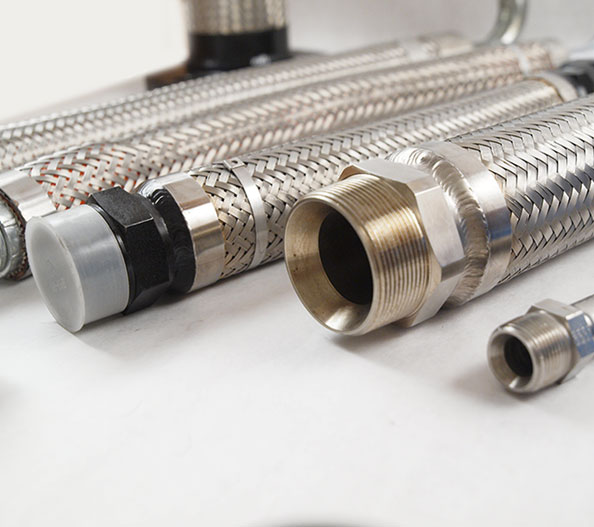Metal hose connector is a high-quality flexible pipeline in modern industrial pipelines. It is mainly composed of bellows, net sleeves and joints. Its inner tube is a spiral or ring-shaped thin-walled stainless steel corrugated tube, and the outer mesh sleeve of the corrugated tube is woven by stainless steel wire or steel belt according to certain parameters. The joints or flanges at both ends of the hose are matched with the joints or flanges of the customer's pipeline. The corrugated pipe of the hose is formed by high-precision plastic processing of seamless or welded stainless steel pipes with extremely thin walls. Due to the elastic characteristics of the bellows contour, the hose has good flexibility and fatigue resistance, making it easy to absorb various cyclic loads of movement and deformation, especially the ability to compensate for large displacements in the pipeline system. Media visualization (media visualization), process automation
https://www.flexible-shaft-coupling.top/product/air-hose-coupling/


Metal hose joints are mainly used in the connection between pipelines and equipment where the pipeline medium is oil or fresh water in marine pipeline systems. They can compensate for a certain relative displacement and have the effect of reducing vibration and noise. However, if the selection is improper, not only the effect of vibration isolation and noise reduction will not be achieved, but the damage of the metal hose will cause problems such as pipeline leakage and even equipment failure.
The selection of metal hose mainly includes the correct selection of parameters such as diameter, connection type, working pressure, temperature correction, minimum bending radius and hose length. The diameter, connection type and working pressure directly depend on the requirements of the piping system. Generally, there is no problem. It is worth mentioning that when selecting the hose design pressure (should be greater than the system working pressure), it should not be too high, because with the soft As the pressure-bearing capacity of the pipe increases, its bending capacity is greatly reduced. The temperature correction and the minimum bending radius are fixed for the product and are given by the manufacturer. What we often have problems with is the selection of the length of the metal hose. Too long a hose will cause instability, increase flow resistance, and additional mechanical damage and vibration problems. If the hose is too short, it may not be able to achieve compensation and vibration reduction. The purpose of eliminating noise will also cause excessive bending stress and affect life. The following only introduces the selection of hose length in two typical cases commonly used in marine pipelines.
1) Axial displacement compensation
We often think that since it is a hose connector, it must be free to expand and contract, but in fact the metal hose itself cannot be stretched in the axial direction, but the appropriate metal hose length can be selected by calculating the axial compensation amount.
among them:
L is the length of the selected metal hose;
Lmin-the straight length of the metal hose after bending;
x-axial compensation amount;
R is the bending radius of the metal hose;
D-the diameter of the metal hose;
A working bending angle of the metal hose;
K-coefficient (K=1~1.5).
Note: working bending angle of metal hose
Should not be greater than its allowable bending angle, generally 30. One 45. . The bending radius of the metal hose must be greater than its minimum bending radius. The allowable bending angle and minimum bending radius of the metal hose are provided by the manufacturer.
2) Radial displacement compensation
The displacement compensation of the metal hose in the radial direction depends on its design bending radius and the size of the lateral displacement. When the length and bending radius of the metal hose are fixed, the larger the working bending angle e, the greater the lateral displacement compensation, but the working bending angle must be less than 45. .
Where:
Y-radial compensation amount;
L is the length of the selected metal hose;
Lmin-the straight length of the metal hose after bending;
R is the bending radius of the metal hose;
D-the diameter of the metal hose;
A working bending angle of the metal hose;
K-coefficient (K=1~1.5).


